#joseph f biroc
Explore tagged Tumblr posts
Text
Your hosts peek through "Illusion-O" glasses to review 13 GHOSTS (1960) from William Castle! This spoopy children's horror stars Donald Woods, Charles Herbert and Martin Milner.
Plus, what's this? A new co-host joins the show..?
Context setting 00:00; Synopsis 13:28; Discussion 27:33; Ranking 38:28
#podcast#horror#classic horror#spoopy#13 ghosts#william castle#robb white#joseph f biroc#edwin bryant#von dexter#columbia pictures#ouija board#charles herbert#jo morrow#rosemary decamp#martin milner#donald woods#margaret hamilton#john van dreelen#illusion-o#ghosts#thirteen ghosts
6 notes
·
View notes
Text
"LITTLE WOMEN" (1978) Review
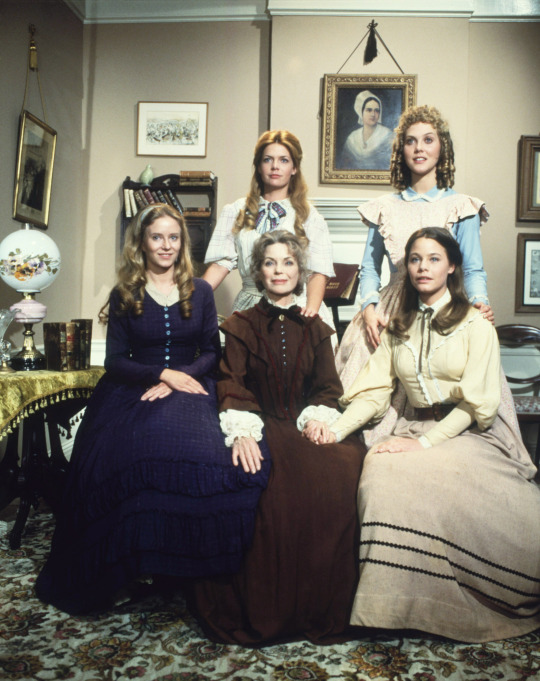
"LITTLE WOMEN" (1978) Review
There have been many adaptations of "Little Women", Louisa May Alcott's 1868 novel. And I have seen most, if not all of the live-action versions. But the first adaptation I have ever seen was NBC's adaptation that first aired back in 1978. If I might be honest, I ended up developing a rather high opinion of it.
Since my first viewing of 1978's "LITTLE WOMEN", I have seen other adaptations. And over the years, I had developed this belief that this television production from 1978 had not been good as I had originally believed. It took many years for me to give this two-part miniseries a second chance. "LITTLE WOMEN" told the story of Josephine (Jo) March and her three sisters during the 1860s - Meg, Beth and Amy. The two-part miniseries opened during the Christmas holidays in December 1861 and follow the sisters, their other family members and friends throughout the Civil War and the early post-war years. Because Jo is the main character, despite being the second sister, this adaptation of "Little Women" has the distinction of being the only version that allows her to serve as narrator.
After my recent re-watch, I could see why my opinion of "LITTLE WOMEN" had diminished over the years . . . at least from a superficial point-of-view. To be blunt, I was not that impressed by the miniseries' production values. The entire production was shot on the Universal Studios backlot and one could sometimes see the California hills in the background. Granted, I still believe set decorator Richard G. Goddard, art director Howard E. Johnson and cinematographer Joseph F. Biroc did the best they could to recreate 1860s Concord, Massachusetts, New York City and Italy. But I did have a problem with the miniseries' costume designs. On the surface, they seemed . . . serviceable for a television production set during the 1860s. But if I must be frank, the costumes also looked as if they had been taken from a costume warehouse for second-rate stage productions. Even worse, all or most of the actresses seemed to be wearing mid-to-late 1970s shoes underneath their mid-19th century dresses and gowns. I was shocked to discover that one of Hollywood's most iconic costume designer, Edith Head, had created the miniseries' costumes. So . . . what on earth happened? Head had created the costumes? "LITTLE WOMEN" was not even Head's first or last period drama. So, what happened?
Did I have any other problems with "LITTLE WOMEN"? Well . . . I did not care for leading actress Susan Dey's hairstyle in the second part of the miniseries. I realize her character, Jo March, had cut her hair to raise funds for her mother's journey to Washington D.C. But her hair never grew back. Never. Instead, it remained shorter than it originally was and styled into a bob. Why? And I had a problem with two particular performances. I will discuss one of them later. The other involved leading lady Susan Dey serving as the miniseries' narrator. Do not get me wrong. Dey is a fine actress and did the best she could. But I found her narration a bit clunky and unnecessary, thanks to the words provided to her by screenwriter Suzanne Clauser's teleplay.
Despite my quibbles, I found a lot to admire about "LITTLE WOMEN". I believe its status as a two-part miniseries, instead of a movie, screenwriter Suzanne Clauser had plenty of opportunities to fully adapt Alcott's novel with less shortcuts and more depth. I have always believed that Alcott's novel was basically a coming-of-age story for Jo March and her three sisters. To me, this made any adaptation of "LITTLE WOMEN" a major character study. And if there is one thing that the two-part miniseries did well was explore its characters and their situations with great depth.
This especially seemed to be the case of Jo's relationship with her neighbor and friend, Theodore "Laurie" Laurence, his personal relationship with his grandfather James Laurence, Amy's European trip and her romantic travails, and Meg's relationship with Laurie's tutor John Brooke. I was especially impressed by the production's handling of Jo's relationship with Professor Friedrich Bhaer. I found it very dynamic, thanks to Suzanne Clauser's screenplay, along with the performances involved. Some, but not all of the adaptations of Alcott's novel tend to forget - at times - that part of it spanned most of the U.S. Civil War. Fortunately, this adaptation never forgot. And as much as I seemed critical of the miniseries' narration, it also reminded television audiences that . . . yes, part of "LITTLE WOMEN" was partially set during the Civil War.
Speaking of performances, "LITTLE WOMEN" had the blessed luck to feature a first-rate cast. I may not have been impressed by the narration provided by Susan Dey (for which I blame another), I was more than impressed by her portrayal of the story's leading character, Josephine "Jo" March. I though she did a superb job in capturing Jo's mercurial personality and obsession with her developing profession as a writer. Meredith Baxter gave an excellent performance as the oldest March sister, Margaret "Meg" March. She conveyed Meg's vanity and obsession with the family's social status and stubborn refusal to give up her love for John Brooke. My only issue is that I believe the actress may have been a bit too old portraying a character that aged from 16 to her early 20s. Eve Plumb portrayed the shy, yet musical Elizabeth "Beth" March. I thought she did an excellent job of combining Beth's emotional, yet retiring nature and in the end, gave a very poignant performance. Ann Dusenberry was roughly 24 to 25 years old when she portrayed the youngest March sibling, Amy. Before my recent re-watch of "LITTLE WOMEN", I had assumed she was too old to portray a younger Amy. But upon my viewing, I realized that she actually managed to give a rather convincing and skillful performance of Amy during the war years (between ages 12 and 16) without to resorting to exaggerated histrionics. And I also admired her portrayal of the older Amy who found herself drawn between two men during her European trip.
I cannot deny that most of the actors who have portrayed Theodore "Laurie"/"Teddy" Laurence over the years gave some pretty damn good performances. But I believe that Richard Gilliland's portrayal of the emotional and moody "Laurie" has to be one of the two best I have ever seen, hands down. His only equal - at least in my eyes - is Jonah Hauer King's performance in the 2017 BBC miniseries. But if I had to choose my favorite portrayal of Laurie's stern, yet warm grandfather, James Laurence, it would be the one given by Hollywood icon Robert Young in this miniseries. May I be frank? I believe both actors provided some of the production's best dramatic moments in their depiction of the developing relationship between grandson and grandfather.
Dorothy McGuire gave a fine performance as Mrs. March aka "Marmie", the four sisters' mother. Thanks to the actress' performance, her Mrs. March seemed more like a well-rounded human being, instead of an archetype. Greer Garson was in fine form as the March family's tart-tongued, yet wealthy matriarch, Aunt Josephine March. William Shatner was excellent as the German-born professor who befriended Jo in New York City, Professor Friedrich Bhaer. Although I found his German accent a bit questionable, I cannot deny that he managed to provide a great deal of energy and complexity to Friedrich's relationship with Jo. Cliff Potts gave a solid performance as Meg's love interest and Laurie's tutor, John Brooke. I can say the same about Virginia Gregg, who portrayed the family's housekeeper, Hannah Mullet. I wish I could provide a better opinion of William Schallert's portrayal of the sisters' father, John March, but his presence in the miniseries seemed very limited, aside from one scene that featured the birth of Meg's children. One performance really failed to impress me and it came from John de Lancie, who portrayed Laurie's English-born classmate from Harvard and Amy's suitor, Frank Vaughan (Fred in the novel). Quite frankly, I found his performance a bit off. Knowing de Lancie for the first-rate actor he truly is, I suspect that between Alcott and screenwriter Suzanne Clauser's writing, the character ended up as a flat, one-note plot device - a situation that not even de Lancie could rise above.
Yes, I had some issues with "LITTLE WOMEN". I found some of the production values questionable, especially some of Edith Head's costumes, the hairstyles and one particular character. But overall, I believe it proved to be a first-rate adaptation of Louisa May Alcott's novel. If I must be frank, thanks to David Lowell Rich's direction, Suzanne Clauser's screenplay and a superb cast led by Susan Dey, I consider the 1978 adaptation of Alcott's novel to be among the three best I have ever seen.
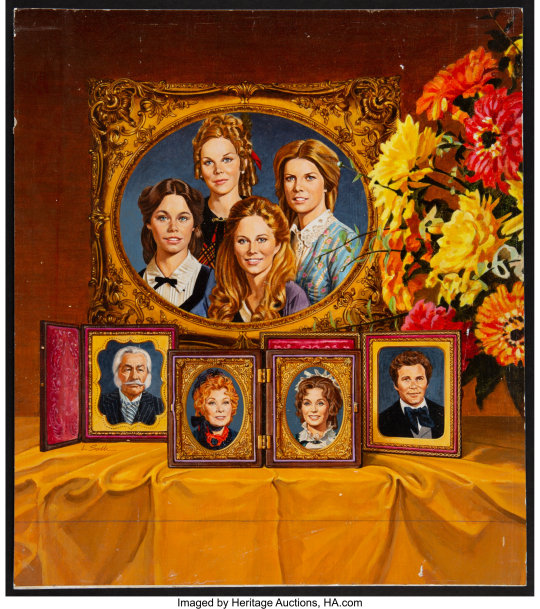
#little women#little women 1978#louisa may alcott#susan dey#jo march#meredith baxter#meg march#eve plumb#beth march#ann dusenberry#amy march#richard gilliland#theodore laurie laurence#dorothy mcguire#marmee march#robert young#greer garson#william shatner#john de lancie#david lowell rich#virginia gregg#cliff potts#u.s. civil war#gilded age#william schallert#joyce bulifant#carlene watkins#period drama#period dramas#costume dramas
13 notes
·
View notes
Text

Evelyn Keyes in The Killer That Stalked New York (Earl McEvoy, 1950)
Cast: Evelyn Keyes, Charles Korvin, William Bishop, Dorothy Malone, Lola Albright, Barry Kelley, Carl Benton Reid, Ludwig Donath, Art Smith, Whit Bissell, Roy Roberts, Connie Gilchrist, Dan Riss, Harry Shannon, Jim Backus, Reed Hadley (voice). Screenplay: Harry Essex, based on a magazine article by Milton Lehman. Cinematography: Joseph F. Biroc. Art direction: Walter Holscher. Film editing: Jerome Thoms. Music: Hans J. Salter.
I wonder what RFK Jr. would have to say about The Killer That Stalked New York, now that he threatens to put his anti-vax quackery into effect. It's a taut little thriller about a smallpox epidemic, in which the heroes are the governmental and medical officials who race against time to vaccinate 8 million people against the disease while its carrier moves among them. The carrier is Sheila Bennet (Evelyn Keyes), who has been to Cuba to retrieve some diamonds that her boyfriend, Matt Krane (Charles Korvin), wants to fence. Somewhere in her journey, she started to get sick, and by the time she arrives in New York City, she's really not feeling so well. Trying to dodge the Treasury agent (Barry Kelley) who's on her tail, she plays hide-and-seek around the city, and when she discovers her boyfriend is double-crossing her, she gets even more furtive. Several people will die from direct contact with her, and others will become carriers before her pursuers, including the doctor (William Bishop) who treated her without knowing the real nature of her disease, finally track her down. A voiceover (Reed Hadley) keeps hyping the urgency of the situation, but it's really not necessary -- Earl McEvoy's crisp pacing and the effective location shooting by Joseph F. Biroc supply enough intensity and reality. There are some nice surprises among the cast, including Dorothy Malone as a nurse and Jim Backus as a club owner, both of them pre-stardom.
1 note
·
View note
Text
Down Three Dark Streets
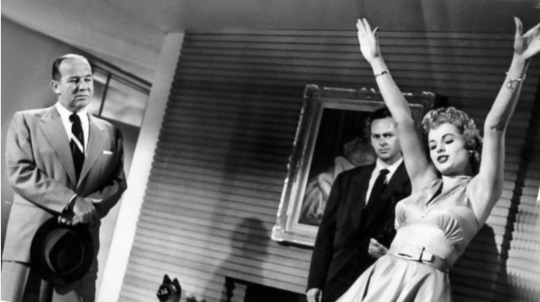
According to Eddie Muller, and why would anybody doubt him, Arnold Laven’s DOWN THREE DARK STREETS (1954, TCM, because where else would I have heard him talk about it) was the first police film to pursue multiple plots, thus paving the way for such TV series as HILL STREET BLUES and NYPD BLUE. Broderick Crawford is an FBI boss in Los Angeles who inherits three cases from an agent who was shot down while investigating one of them. But which one? Is it the bogus car theft charge against an innocent man who refuses to clear himself because the criminals threatened his blind wife (Marisa Pavan)? The escaped killer whose girlfriend (Martha Hyer) lives in L.A.? Or the widow (Ruth Roman) being extorted with threats to kill her daughter? It all moves pretty quickly and has great atmospheric cinematography by Joseph F. Biroc, including a well-done walk through a cemetery late at night, a shootout in an abandoned stable and a fight at the foot of the Hollywood sign. Screenwriters Gordon and Mildred Gordon and Bernard C. Schonefeld have included some fun side characters like a restaurant cook who hopes finding a dead body will make him famous and a man who’s invented a spy-detecting radar gun that’s fingered his brother-in-law. Crawford is solid and specific as John Ripley, The Gordons’ recurring FBI agent, who also turns up played by Glenn Ford in EXPERIMENT IN TERROR (1962). The three women are a study in different acting styles. Pavan is natural as the blind woman who initially seems fragile but later displays a surprising level of cunning. Hyer seems to have been forced to do a Marilyn Monroe imitation but manages to turn it into a character, particularly when she talks about the impoverished childhood that led her to gladly accept a criminal’s expensive gifts. Roman has some effective moments, particularly dealing with her child and flirting with Crawford, but at times she seems to be substituting heavy breathing for acting. The cast also includes Kenneth Tobey, Max Showalter (billed as Casey Adams), Claude Akins, Stafford Repp and William Schallert.
0 notes
Photo

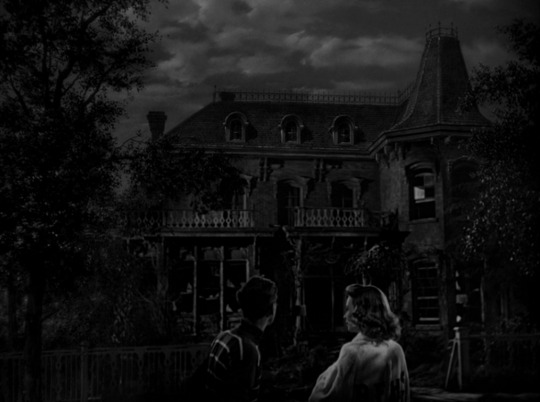
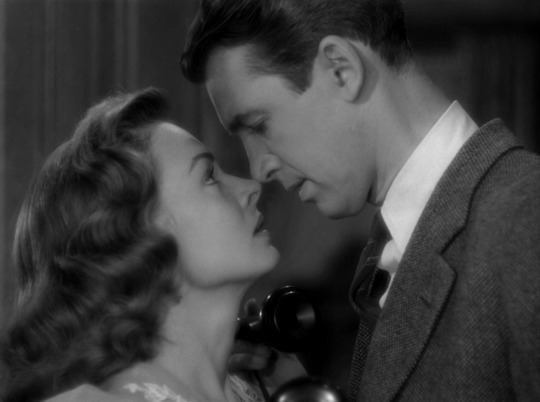

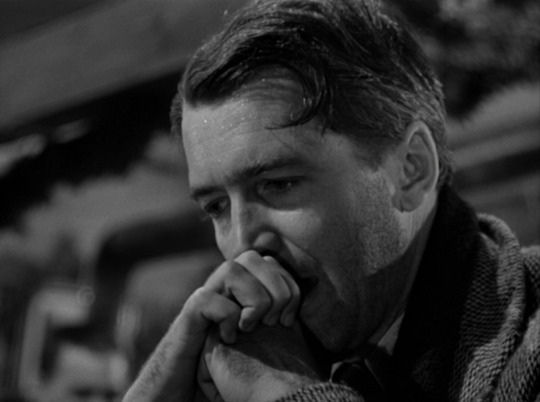
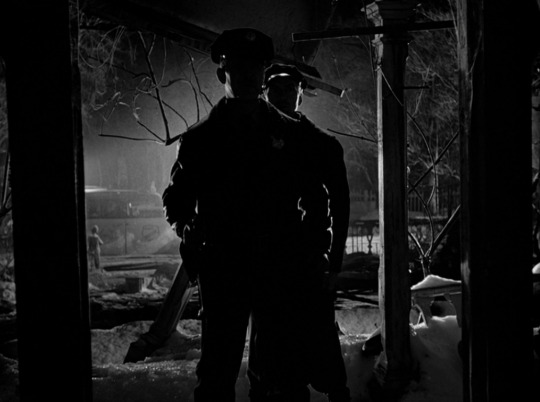




**Shots of the Movie**
It’s a Wonderful Life (1946)
Director: Frank Capra Cinematographers: Joseph F. Biroc, Joseph Walker, Victor Milner (uncredited)
#shots of the movie#it's a wonderful life#its a wonderful life#frank capra#james stewart#jimmy stewart#joseph f biroc#joseph walker#classic cinema#donna reed#george bailey#lionel barrymore#henry travers#karolyn grimes#screencaps#screenshots#stills#cinematography#christmas#cinema#rko#movie stills#movie screencaps#b&w#black & white#1946 in film#1946#1940s cinema#1.37:1
95 notes
·
View notes
Text

104 notes
·
View notes
Video
tumblr
Viva Las Vegas (1964)
“It should be obvious that I'm completely indifferent to anything this boy might give me... it's a tree!”
Director: George Sidney
Cinematographer: Joseph F. Biroc
3 notes
·
View notes
Photo

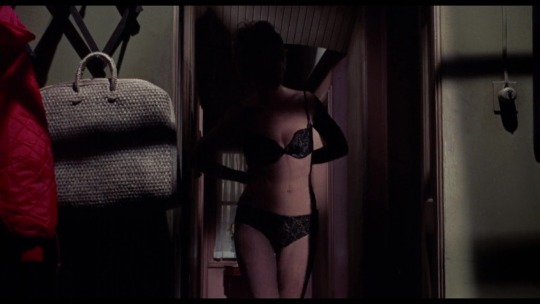
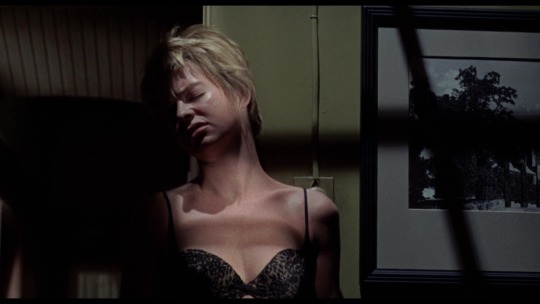
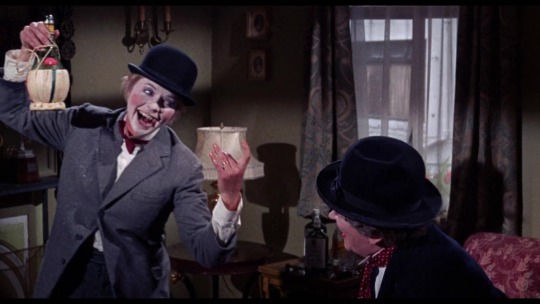

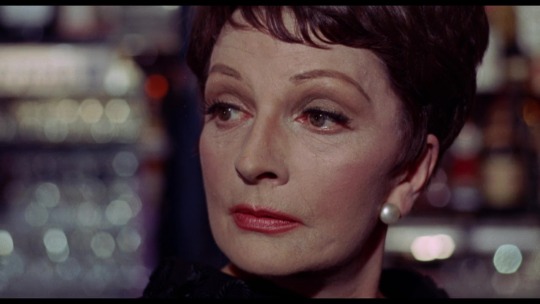

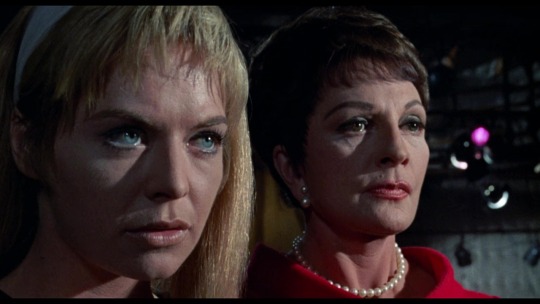
the killing of sister george (us, aldrich 67)
29 notes
·
View notes
Photo

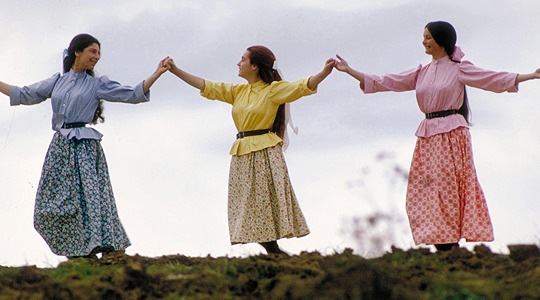

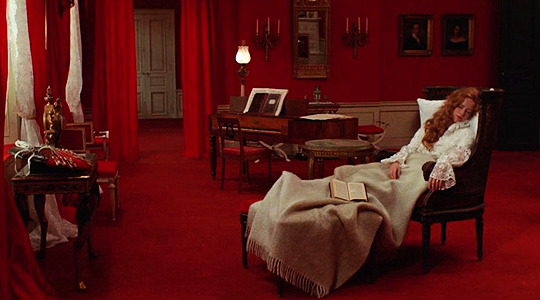


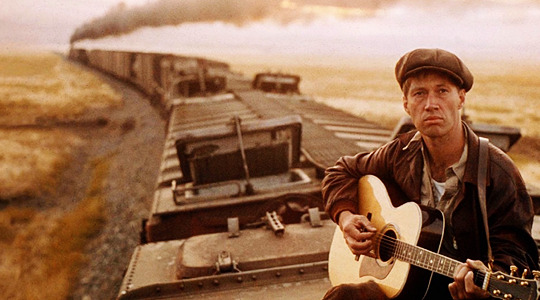

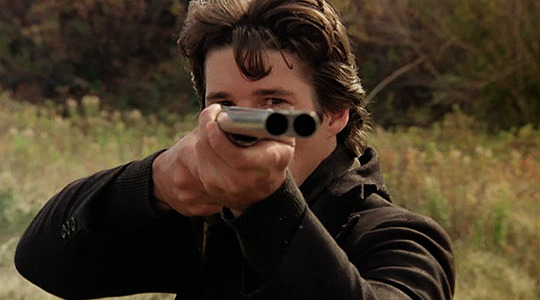

And the Academy Award for Best Cinematography goes to - 1970 - Freddie Young - Ryan’s Daughter 1971 - Oswald Morris - Fiddler on The Roof 1972 - Geoffrey Unsworth - Cabaret 1973 - Sven Nykvist - Cries And Whispers 1974 - Fred J. Koenekamp & Joseph F. Biroc - The Towering Inferno 1975 - John Alcott - Barry Lyndon 1976 - Haskell Wexler - Bound For Glory 1977 - Vilmos Zsigmond - Close Encounters of The Third Kind 1978 - Néstor Almendros - Days of Heaven 1979 - Vittorio Storaro - Apocalype Now
#long post#cinematography#academy awards#academy award#award season#cinematographer#70s#freddie young#ryan's daughter#oswald morris#fiddler on the roof#geoffrey unsworth#cabaret#sven nykvist#cries and whispers#fred j koenekamp#joseph f biroc#the towering inferno#john alcott#barry lyndon#haskell wexler#bound for glory#vilmos zsigmond#close encounters of the third kind#nestor almendros#days of heaven#vittorio storaro#apocalypse now#colour#dop
471 notes
·
View notes
Photo

Under the Yum Yum Tree (1963)
#1960s#actor paul lynde#voice actor#dir david swift#dp joseph f biroc#cat comedy#cat romance#cat romcom#american#olive#animal#cat#tongue#under the yum yum tree
5 notes
·
View notes
Photo

On the set of Shall We Dance: Ginger Rogers, Fred Astaire, [Unknown], Director Mark Sandrich, Cinematographer David Abel, Camera Assistant Willard Barth and Camera Operator Joseph F. Biroc.
#Mark Sandrich#Director#Ginger Rogers#Fred Astaire#David Abel#Willard Barth#Joseph F. Biroc#Shall We Dance#1937#Cinematographer#Camera Assistant#Camera Operator
9 notes
·
View notes
Photo

NOIR CITY 19 continues today at Oakland's Grand Lake Theatre with two double features, THE ACCUSED (1:00) & THE KILLER THAT STALKED NEW YORK (3:00) and NO WAY OUT (7:00) & THE SNIPER (9:30). Films introduced by FNF prez Eddie Muller. Full festival schedule and tickets available at NoirCity.com
Saturday Matinée • March 26
THE ACCUSED 1:00 PM
Demure college professor Wilma Tuttle (Loretta Young) finds herself in jeopardy after killing an overly amorous student in self-defense. As the noose tightens around her, both the victim's guardian (Robert Cummings) and a dogged homicide detective (Wendell Corey) pursue her. Apparently, being a suspected killer makes Wilma irresistible to men. June Truesdell's 1947 novel Be Still, My Love, adapted by Ketti Frings, puts a decidedly feminine slant on a classic noir premise. It's also the rare noir where both the source novel and the screenplay are the work of women. Frings had a résumé similar to many male colleagues in Hollywood—she'd worked as a newspaper correspondent, ad writer, and PR agent before scoring with her first novel, Hold Back the Dawn, adapted to film in 1941 by Billy Wilder. The Accused is a prescient psychological thriller that presaged "Me Too" by many decades.
1949, Paramount [Library of Congress]. 101 minutes. Screenplay by Ketti Frings, from the novel Be Still, My Love by June Truesdell. Produced by Hal Wallis. Directed by William Dieterle.
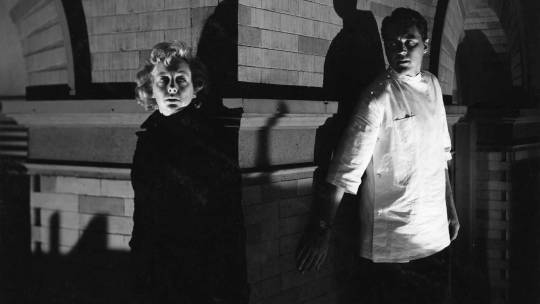
THE KILLER THAT STALKED NEW YORK 3:00 PM
Petty crook Matt Krane (Charles Korvin) returns to New York City from Cuba, using his girlfriend Sheila (Evelyn Keyes) as a mule to smuggle $40,000 worth of diamonds. What he doesn't realize is that Sheila is carrying something more dangerous — smallpox. What Sheila doesn't realize is that Matt plans on double-crossing her, running away with her sister Francie and the jewels. Sheila must elude the police to exact revenge on the two-timing louse, but with every step she threatens to unleash an epidemic that could infect 8,000,000 people. This fictionalized version of a true story was until recently an antiquated curio, a campy time capsule of an earlier era. Well, nobody's laughing now. Part suspenseful crime thriller, part Public Service Announcement, The Killer That Stalked New York, beautifully filmed by the great Joseph Biroc, recalls a bygone America, one where citizens trusted each other, the government, and miracles of modern science.
1950, Columbia Pictures [Sony Pictures Classics]. 79 minutes. Screenplay by Harry Essex, from a Cosmopolitan magazine article by Milton Lehman. Produced by Robert Cohn. Directed by Earl McEvoy.
Saturday Evening • March 26
NO WAY OUT 7:00 PM

Ray and Johnny Biddle, low-life criminals, are wounded trying to rob a gas station. Rushed to the county hospital, they are treated by an African American resident, Dr. Luther Brooks (Sidney Poitier, in his screen debut). Ray, a virulent racist (Richard Widmark, at his most incendiary), refuses to be treated by a black man, and accuses Dr. Brooks of murder when his brother dies. The incident touches off a firestorm that threatens to erupt into an all-out race war. In the middle is Johnny's ex-wife Edie (Linda Darnell), stuck between the ingrained racism of her "Beaver Canal" neighborhood and a growing awareness of a world beyond its confines. Widmark and Poitier give riveting performances, and Darnell quietly steals the show as a woman trying to escape her ignorant upbringing. The Oscar®-nominated screenplay pulls no punches in its squirm-inducing depiction of deep-rooted racism. Brace yourself for a powerful film that, sadly, is as relevant today as the day it was released.
1950, 20th Century–Fox. 106 minutes; Screenplay by Joseph L. Mankiewicz and Lesser Samuels . Produced by Darryl F. Zanuck. Directed by Joseph L. Mankiewicz.
THE SNIPER 9:30 PM
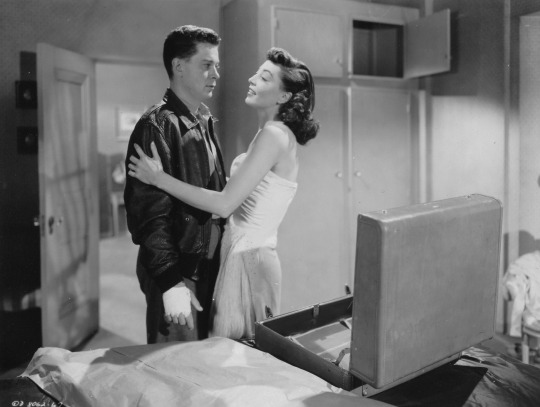
San Francisco is the backdrop for one of the first movies about a modern serial killer. Decades before such stories became commonplace, husband and wife writers Edward and Edna Anhault researched dozens of actual cases to create this psychological "exposé " of a murderous misfit who wants to be caught but finds it too easy to slip into the margins of a "bustling" post-WWII metropolis. Arthur Franz gives an edgy and empathetic performance as the psychically scarred sniper, whose murderous trail leads viewers on a fascinating tour of midcentury San Francisco — from Pacific Heights through the back alleys of North Beach to once-industrial China Basin. Burnett Guffey's camerawork, moving between shadowy '40s noir and '50s docu-realism, enhances Edward Dmytryk's crisp and compelling direction.
1952, Columbia Pictures [Sony Pictures Classics]. 88 minutes. Screenplay by Harry Brown, from a story by Edward and Edna Anhalt. Produced by Stanley Kramer. Directed by Edward Dmytryk
#film noir#film noir foundation#film noir festival#noir city#the accused#Loretta Young#Wendell Corey#the killer that stalked new york#evelyn keyes#no way out#linda darnell#sidney potier#richard widmark#the sniper#marie windsor#eddie muller#noir city 19#oakland#grand lake theatre
32 notes
·
View notes
Photo
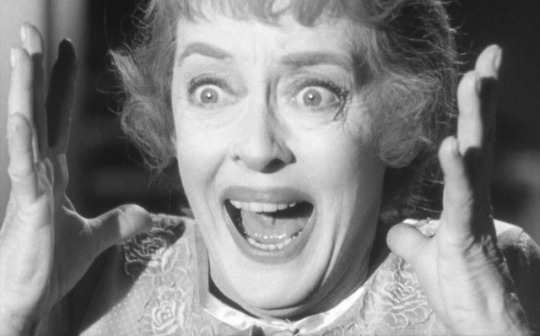

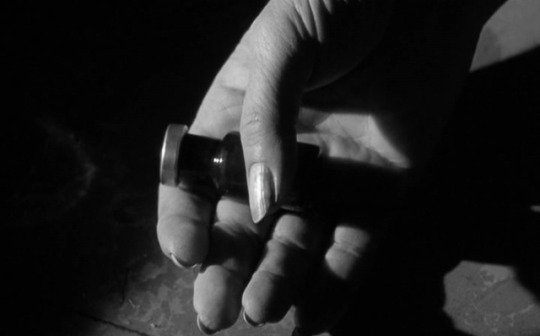



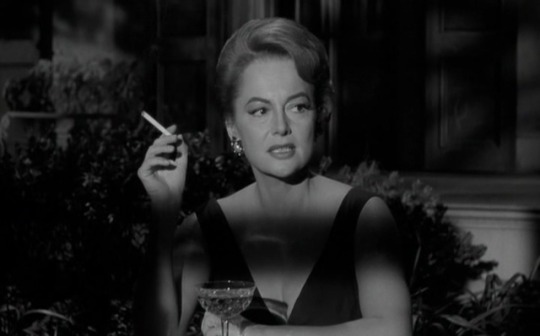



Hush…Hush, Sweet Charlotte (1964) by Robert Aldrich
3 / 5
1 2 4 5
#Hush...Hush Sweet Charlotte#movie#screen caps#my edit#robert aldrich#bette davis#olivia de havilland#joseph cotten#agnes moorehead#noir#film noir#cinematography#joseph f. biroc
1 note
·
View note
Video
youtube
Sunrise: A Song Of Two Humans (1927/28) - Charles Rosher & Karl Struss
White Shadows In The South Seas (1928/29) - Clyde De Vinna
With Byrd At The South Pole (1929/30) - Joseph T. Rucker & Willard Van der Veer
Tabu: A Story Of The South Seas (1930/31) - Floyd Crosby
Shanghai Express (1931/32) - Lee Garmes
A Farewell To Arms (1932/33) - Charles Lang
Cleopatra (1934) - Victor Milner
A Midsummer Night’s Dream (1935) - Hal Mohr
Anthony Adverse (1936 B&W) - Tony Gaudio
The Garden Of Allah (1936 COLOR) - W. Howard Greene & Harold Rosson
The Good Earth (1937 B&W) - Karl Freund
A Star Is Born (1937 COLOR) - W. Howard Greene
The Great Waltz (1938 B&W) - Joseph Ruttenberg
Sweethearts (1938 COLOR) - Oliver T. Marsh & Allen Davey
Wuthering Heights (1939 B&W) - Gregg Toland
Gone With The Wind (1939 COLOR) - Ernest Haller & Ray Rennahan
Rebecca (1940 B&W) - George Barnes
The Thief Of Bagdad (1940 COLOR) - Georges Perinal
How Green Was My Valley (1941 B&W) - Arthur C. Miller
Blood And Sand (1941 COLOR) - Ernest Palmer & Ray Rennahan
Mrs. Miniver (1942 B&W) - Joseph Ruttenberg
The Black Swan (1942 COLOR) - Leon Shamroy
The Song Of Bernadette (1943 B&W) - Arthur C. Miller
Phantom Of The Opera (1943 COLOR) - Hal Mohr & W. Howard Greene
Laura (1944 B&W) - Joseph LaShelle
Wilson (1944 COLOR) - Leon Shamroy
The Picture Of Dorian Gray (1945 B&W) - Harry Stradling
Leave Her To Heaven (1945 COLOR) - Leon Shamroy
Anna And The King Of Siam (1945 B&W) - Arthur C. Miller
The Yearling (1946 COLOR) - Charles Rosher, Leonard Smith & Arthur E. Arling
Great Expectations (1947 B&W) - Guy Green
Black Narcissus (1947 COLOR) - Jack Cardiff
The Naked City (1948 B&W) - William H. Daniels
Joan Of Arc (1948 COLOR) - Joseph A. Valentine, William V. Skall & Winton Hoch
Battleground (1949 B&W) - Paul C. Vogel
She Wore A Yellow Ribbon (1949 COLOR) - Winton Hoch
The Third Man (1950 B&W) - Robert Krasker
King Solomon’s Mines (1950 COLOR) - Robert Surtees
A Place In The Sun (1951 B&W) - William C. Mellor
An American In Paris (1951 COLOR) - Alfred Gilks & John Alton
The Bad And The Beautiful (1952 B&W) - Robert Surtees
The Quiet Man (1952 COLOR) - Winton Hoch & Archie Stout
From Here To Eternity (1953 B&W) - Burnett Guffey
Shane (1953 COLOR) - Loyal Griggs
On The Waterfront (1954 B&W) - Boris Kaufman
Three Coins In The Fountain (1954 COLOR) - Milton R. Krasner
The Rose Tattoo (1955 B&W) - James Wong Howe
To Catch A Thief (1955 COLOR) - Robert Burks
Somebody Up There Likes Me (1956 B&W) - Joseph Ruttenberg
Around The World In 80 Days (1956 COLOR) - Lionel Lindon
The Bridge On The River Kwai (1957) - Jack Hildyard
The Defiant Ones (1958 B&W) - Sam Leavitt
Gigi (1958 COLOR) - Joseph Ruttenberg
The Diary Of Anne Frank (1959 B&W) - William C. Mellor
Ben-Hur (1959 COLOR) - Robert Surtees
Sons And Lovers (1960 B&W) - Freddie Francis
Spartacus (1960 COLOR) - Russel Metty
The Hustler (1961 B&W) - Eugen Schufftan
West Side Story (1961 COLOR) - Daniel L. Fapp
The Longest Day (1962 B&W) - Jean Bourgoin & Walter Wottitz
Lawrence Of Arabia (1962 COLOR) - Freddie Young
Hud (1963 B&W) - James Wong Howe
Cleopatra (1963 COLOR) - Leon Shamroy
Zorba The Greek (1964 B&W) - Walter Lassally
My Fair Lady (1964 COLOR) - Harry Stradling
Ship Of Fools (1965 B&W) - Ernest Laszlo
Doctor Zhivago (1965 COLOR) - Freddie Young
Who’s Afraid Of Virginia Woolf? (1966 B&W) - Haskell Wexler
A Man For All Seasons (1966 COLOR) - Ted Moore
Bonnie And Clyde (1967) - Burnett Guffey
Romeo And Juliet (1968) - Pasqualino De Santis
Butch Cassidy And The Sundance Kid (1969) - Conrad L. Hall
Ryan’s Daughter (1970) - Freddie Young
Fiddler On The Roof (1971) - Oswald Morris
Cabaret (1972) - Geoffrey Unsworth
Cries And Whispers (1973) - Sven Nykvist
The Towering Inferno (1974) - Fred J. Koenekamp & Joseph F. Biroc
Barry Lyndon (1975) - John Alcott
Bound For Glory (1976) - Haskell Wexler
Close Encounters Of The Third Kind (1977) - Vilmos Zsigmond
Days Of Heaven (1978) - Nestor Almendros
Apocalypse Now (1979) - Vittorio Storaro
Tess (1980) - Geoffrey Unsworth & Ghislain Cloquet
Reds (1981) - Vittorio Storaro
Gandhi (1982) - Billy Williams & Ronnie Taylor
Fanny And Alexander (1983) - Sven Nykvist
The Killing Fields (1984) - Chris Menges
Out Of Africa (1985) - David Watkin
The Mission (1986) - Chris Menges
The Last Emperor (1987) - Vittorio Storaro
Mississippi Burning (1988) - Peter Biziou
Glory (1989) - Freddie Francis
Dances With Wolves (1990) - Dean Semler
JFK (1991) - Robert Richardson
A River Runs Through It (1992) - Philippe Rousselot
Schindler’s List (1993) - Janusz Kaminski
Legends Of The Fall (1994) - John Toll
Braveheart (1995) - John Toll
The English Patient (1996) - John Seale
Titanic (1997) - Russell Carpenter
Saving Private Ryan (1998) - Janusz Kaminski
American Beauty (1999) - Conrad L. Hall
Crouching Tiger, Hidden Dragon (2000) - Peter Pau
The Lord Of The Rings: The Fellowship Of The Ring (2001) - Andrew Lesnie
Road To Perdition (2002) - Conrad L. Hall
Master And Commander: The Far Side Of The World (2003) - Russell Boyd
The Aviator (2004) - Robert Richardson
Memoirs Of A Geisha (2005) - Dion Beebe
Pan’s Labyrinth (2006) - Guillermo Navarro
There Will Be Blood (2007) - Robert Elswit
Slumdog Millionaire (2008) - Anthony Dod Mantle
Avatar (2009) - Mauro Fiore
Inception (2010) - Wally Pfister
Hugo (2011) - Robert Richardson
Life Of Pi (2012) - Claudio Miranda
Gravity (2013) - Emmanuel Lubezki
Birdman (2014) - Emmanuel Lubezki
The Revenant (2015) - Emmanuel Lubezki
La La Land (2016) - Linus Sandgren
Blade Runner 2049 (2017) - Roger Deakins
12 notes
·
View notes
Text

42 notes
·
View notes
Photo

Airplane (1980)
“Joey, have you ever been in a... in a Turkish prison?”
Directors: Jim Abrahams, David Zucker, Jerry Zucker
Cinematographer: Joseph F. Biroc
2 notes
·
View notes